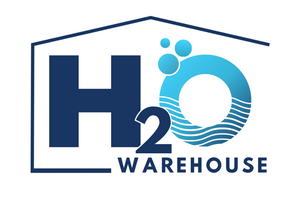A Guide to Cleaning Gutters and Downpipes
Maintaining Your Rainwater Harvesting System: A Guide to Cleaning Gutters and Downpipes
Cleaning gutters and downpipes is a crucial aspect of maintaining your rainwater harvesting system. By keeping these components clear of debris and blockages, you ensure the efficient flow of rainwater from your roof to the storage tank. In this guide, we'll walk you through the best practices and steps for cleaning your gutters and downpipes, emphasising safety, tips, and tricks along the way.
1. Safety First
Before you begin cleaning your gutters and downpipes, prioritise safety:
- Use Proper Equipment: Wear sturdy gloves to protect your hands from sharp debris, and use a stable ladder that's tall enough to reach your gutters comfortably.
- Buddy System: Whenever possible, have someone else present to hold the ladder steady and assist you if needed.
- Watch Your Step: Be mindful of your footing on the ladder and roof to prevent slips and falls.
2. Gather Your Tools
Before you start cleaning, gather the necessary tools and equipment:
- Ladder: Ensure it's in good condition and placed on stable ground.
- Gloves: Protect your hands from dirt, debris, and potential sharp objects.
- Bucket or Tarp: Use this to collect debris and prevent it from falling on the ground.
- Gutter Scoop or Trowel: Handy for removing leaves, twigs, and other debris from the gutters.
- Hose or Pressure Washer: Use to flush out remaining debris and check for proper water flow.
3. Disconnect Downpipes
Before cleaning the gutters, disconnect the downpipes from the storage tank to prevent debris from entering the system:
- Turn Off Water Supply: If your rainwater harvesting system is connected to a pump, turn off the water supply to prevent accidental activation during cleaning.
- Disconnect Downpipes: Loosen the downpipes connection from the storage tank and carefully remove it.
4. Clear Debris from Gutters
Once you've disconnected the downpipes, it's time to clean the gutters:
- Start at the Downspout: Work your way along the gutter, starting at the downspout and moving outward. Use a gutter scoop or trowel to remove debris, placing it into your bucket or tarp.
- Check for Blockages: Pay close attention to any areas where water may be pooling or overflowing, as these indicate potential blockages.
- Inspect Gutters: While cleaning, inspect the gutters for signs of damage, such as rust, corrosion, or loose fasteners. Address any issues promptly to prevent further damage.
5. Flush Gutters and Downpipes
After removing debris from the gutters, flush them out using a hose or pressure washer:
- Start at the Downspout: Position the hose or pressure washer at the top of the downspout and work your way up, flushing out any remaining debris.
- Check Water Flow: Monitor the water flow to ensure it's unobstructed and flowing freely. If you encounter any blockages, use a plumbing snake or pressure to clear them.
6. Reconnect Downpipes and Test
Once you've finished cleaning the gutters and downpipes, reattach the downpipes to the storage tank:
- Secure Connections: Ensure the downpipes are securely reattached to the storage tank, with no gaps or leaks.
- Test Water Flow: Turn the water supply back on and check for proper water flow through the downpipes. Monitor for any signs of leaks or irregularities.
7. Regular Maintenance
To keep your gutters and downpipes in top condition, follow these maintenance tips:
- Schedule Regular Cleanings: Aim to clean your gutters and downpipes at least twice a year, ideally before the rainy season begins.
- Trim Overhanging Branches: Trim back any overhanging branches near your roof to prevent them from depositing leaves and debris into your gutters.
- Install Gutter Guards: Consider installing gutter guards or screens to help prevent debris buildup and reduce the frequency of cleanings.
By following these best practices and steps for cleaning your gutters and downpipes, you'll ensure the continued efficiency and longevity of your rainwater harvesting system. Remember to prioritise safety at all times and enlist the help of professionals for any maintenance tasks beyond your expertise. With proper care and maintenance, your rainwater harvesting system will continue to provide you with a sustainable source of water for years to come.

- Choosing a selection results in a full page refresh.

